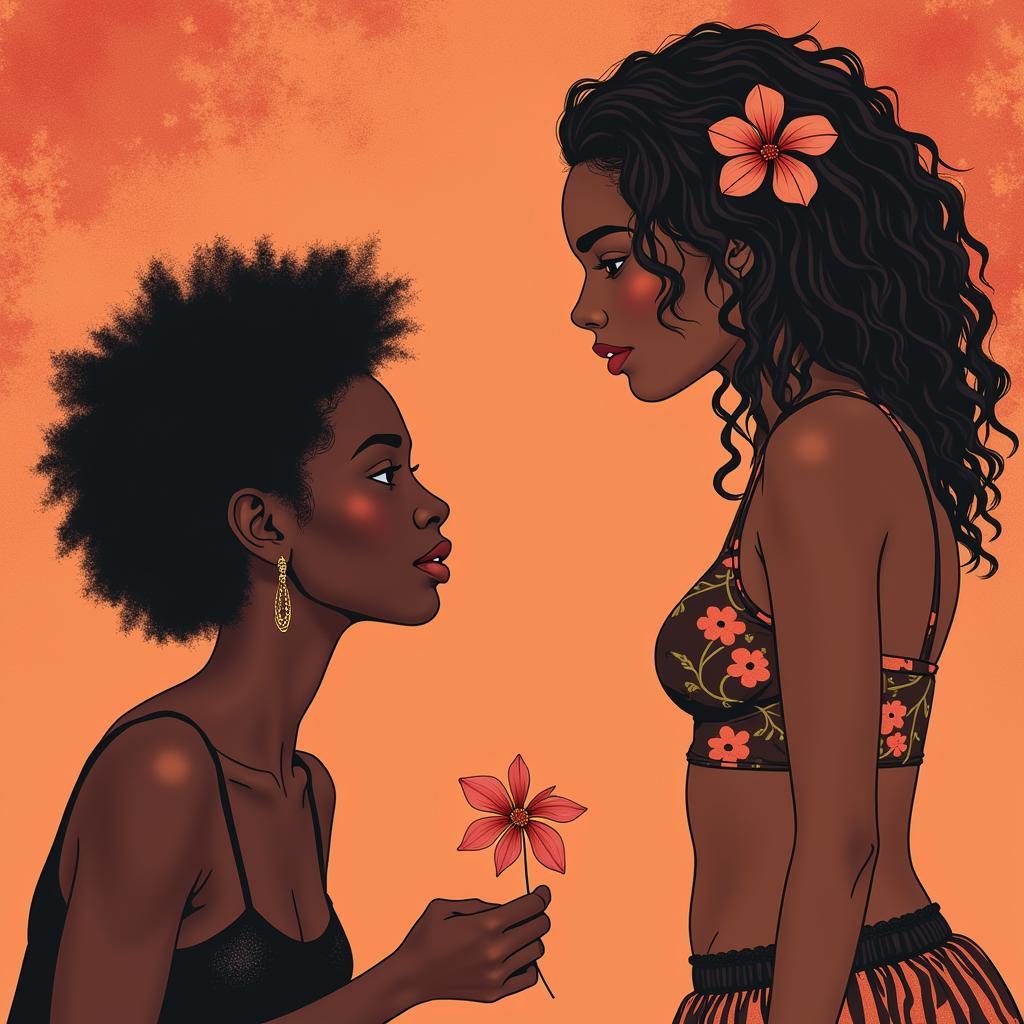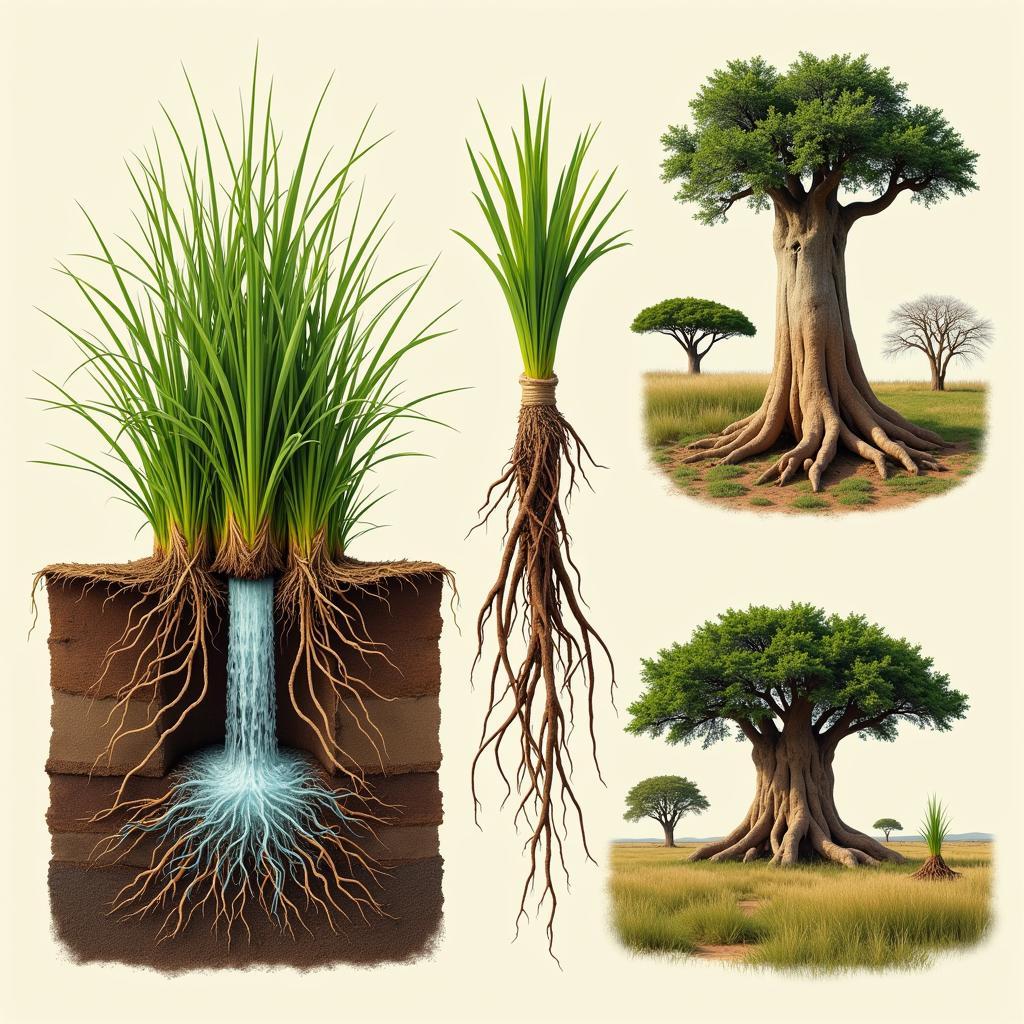African Dance Makeup: A Vibrant Celebration of Culture
African Dance Makeup is more than just aesthetics; it’s a powerful expression of cultural heritage, storytelling, and spiritual connection. From the intricate patterns of the Maasai to the vibrant colors of the Yoruba, each tribe boasts unique traditions that transform the dancer into a living embodiment of their ancestors and beliefs. This article delves into the rich history and significance of African dance makeup, exploring its diverse forms and the stories they tell.
The Cultural Significance of African Dance Makeup
African dance makeup plays a vital role in various ceremonies and rituals. It signifies identity, status, and spiritual connection within a tribe. The specific designs and colors often hold symbolic meaning, representing elements of nature, ancestral spirits, or social roles. For instance, some tribes use white clay to symbolize purity, while others incorporate ochre for its connection to the earth. The makeup isn’t merely decorative; it’s an integral part of the performance, enhancing the storytelling and adding another layer of depth to the dance.
Often, preparing the makeup is a communal activity, strengthening the bond between dancers and reinforcing the sense of belonging. This ritualistic preparation itself becomes an important part of the overall cultural experience. The application of the makeup is often accompanied by songs and chants, further emphasizing the spiritual and social significance.
After this first section, let’s delve into the specific styles and techniques used in different regions. Many African Christian brides also incorporate symbolic elements into their makeup and attire. You can find more information on this topic at African Christian bride.
Regional Variations in African Dance Makeup
The vast continent of Africa is a tapestry of diverse cultures, each with its own unique approach to dance makeup. While certain themes and elements may overlap, each tribe has developed its own distinct style, reflecting its specific history, environment, and beliefs.
West African Dance Makeup
West African dance makeup is often characterized by bold geometric patterns and vibrant colors. The Yoruba of Nigeria, for instance, use intricate facial designs and elaborate headdresses to embody deities and tell their stories. Similarly, the Ashanti of Ghana use specific colors and symbols to denote clan affiliation and social standing.
East African Dance Makeup
In East Africa, the Maasai are known for their distinctive use of red ochre and white clay in their makeup. These natural pigments are not only decorative but also serve a practical purpose, protecting the skin from the harsh sun. The designs often incorporate dots and lines, representing different aspects of their culture and beliefs.
Southern African Dance Makeup
Southern African tribes, such as the Zulu and Xhosa, incorporate elaborate beadwork and feathered headdresses into their dance attire. Facial makeup is often more subtle, focusing on earthy tones and natural pigments. These designs often symbolize connection to the land and ancestral spirits.
Creating Authentic African Dance Makeup
Understanding the cultural context and symbolism behind African dance makeup is crucial for creating authentic looks. While appreciating the artistry is essential, it’s equally important to approach it with respect and avoid cultural appropriation. Learning about the specific traditions of each tribe and using appropriate materials is essential for honoring the cultural significance of these practices. Certain African courtship rituals involve symbolic makeup and attire. To learn more, you can visit African courtship rituals.
Essential Materials
Natural pigments, such as ochre, clay, and charcoal, are traditionally used in African dance makeup. These materials are often mixed with oils or water to create a paste that can be applied to the skin. Modern interpretations may also incorporate face paints and cosmetic products, but it’s crucial to choose colors and designs that are respectful of the cultural origins.
Application Techniques
Different tribes employ various application techniques, from simple dots and lines to intricate geometric patterns. Some use brushes, sponges, or even their fingers to apply the makeup, while others use stencils or stamps to create specific designs. Learning about these techniques can help in appreciating the artistry and cultural significance of African dance makeup.
Aisha Kenyatte, a renowned Kenyan makeup artist specializing in traditional African styles, explains, “The makeup is not merely applied; it is painted, sculpted, and imbued with meaning. Every stroke, every color, tells a story.”
Babatunde Olumide, a Nigerian cultural historian, adds, “African dance makeup is a living art form, constantly evolving while remaining deeply rooted in tradition.”
Conclusion
African dance makeup is a powerful testament to the richness and diversity of African cultures. It is more than mere decoration; it is a vital form of expression, storytelling, and spiritual connection. By understanding its cultural significance and regional variations, we can appreciate the artistry and depth of this ancient tradition. Exploring African dance makeup provides a fascinating glimpse into the heart of African culture and its vibrant artistic expressions. For those interested in different cultural body art, exploring African Mehndi design can be fascinating. You can learn more by visiting African Mehndi design.
FAQ
- What is the purpose of African dance makeup? It serves multiple purposes, including cultural expression, storytelling, spiritual connection, and identification within a tribe.
- What materials are traditionally used? Natural pigments like ochre, clay, and charcoal are commonly used.
- Are there regional variations in African dance makeup? Yes, each tribe has its own distinct style and symbolism.
- How can I learn more about specific tribal traditions? Researching specific tribes and their cultural practices is essential.
- Is it appropriate to wear African dance makeup outside of its cultural context? It’s important to avoid cultural appropriation. Understanding the cultural significance and seeking permission when necessary is crucial.
- Where can I find authentic African dance makeup products? Researching reputable sources specializing in traditional or culturally inspired makeup is recommended.
- Are there any modern interpretations of African dance makeup? Yes, contemporary artists and makeup enthusiasts often draw inspiration from traditional designs while adding their own creative flair. However, respecting the cultural origins is paramount.
Common Scenarios and Questions:
-
Scenario: A performer wants to incorporate African dance makeup into their performance.
-
Question: How can they ensure their use of the makeup is respectful and avoids cultural appropriation?
-
Scenario: A makeup artist is inspired by African dance makeup and wants to create a modern interpretation.
-
Question: How can they balance creative expression with cultural sensitivity?
-
Scenario: Someone is attending a cultural event where African dance will be performed.
-
Question: What is the appropriate etiquette for appreciating and respecting the dancers and their makeup?
Further Exploration
Explore other articles on African culture on our website, including topics like acne African American skin and African cichlids growth r.
Contact Us
For further assistance, please contact us at Phone: +255768904061, Email: kaka.mag@gmail.com, or visit our office at Mbarali DC Mawindi, Kangaga, Tanzania. We have a 24/7 customer service team available to assist you.

